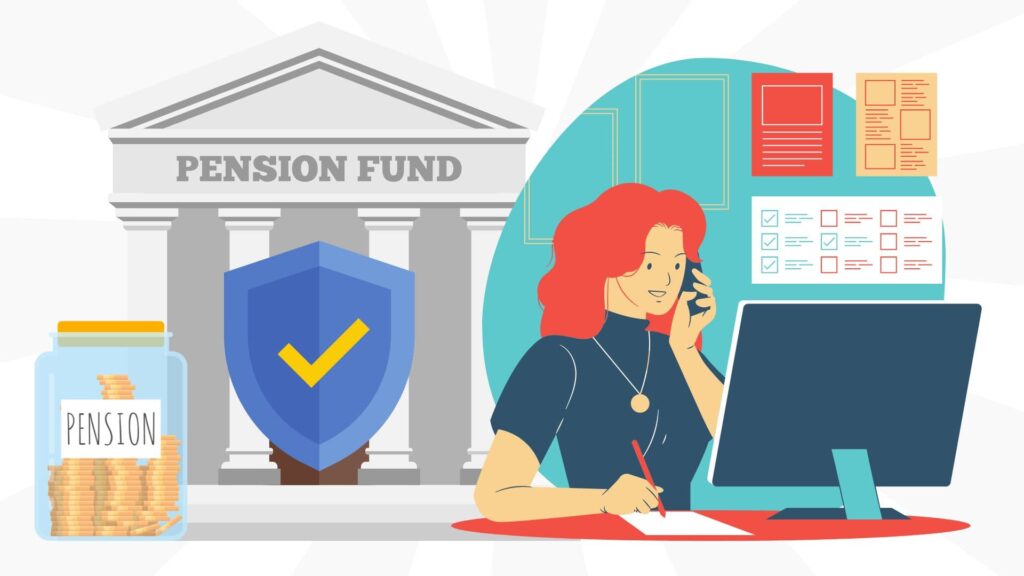
Sammie Ellard-King
I’m Sammie, a money expert and business owner passionate about helping you take control of your wallet. My mission with Up the Gains is to create a safe space to help improve your finances, cut your costs and make you feel good while doing it.
The self-employed have trials and tribulations that the rest of the world knows nothing about. You can often find yourself spending more time finding clients than actually doing any work.
Not to mention the financial instability. You could get a whole lot of invoices through one month and then zero the next.
Unfortunately, this can be awful news for your self employed pension. That is unless you plan ahead.
By essentially not having the luxury of a workplace pension scheme, you might need to think about a self-invested pension or SIPP as they’re also known.
Everyone wants a comfortable retirement regardless of how much they love their job. The good news is that some pensions are explicitly designed with the self-employed in mind.
So, what is the best pension for self employed folk like you and me?
Well, for me it’s Penfold – they were literally made for that reason! You can open one with just £1 and they have excellent customer reviews.
|
||
|
Our Top Picks - Best Pensions For Self Employed
- Penfold – designed for self-employed in mind
- Hargreaves Lansdown – best for fund selection and award winning pension product
- Wealthify – best for simplicity
- Moneyfarm – best for ready-made portfolios
- AJ Bell – most popular pension product in the UK
- PensionBee – best reviews
Types of pensions available to self employed
Personal pension
A personal pension in the UK is a type of retirement savings plan that you set up yourself, rather than through an employer. You contribute money to the plan, which is then invested in a range of assets, such as stocks, bonds, and funds.
The money grows tax-free until you reach retirement age, at which point you can access it as a regular income or lump sum.
Stakeholder pension
A stakeholder pension is helpful for freelancers or self-employed people that have sporadic income. These types of pensions will offer flexibility in most cases so you can pay in as and when money hits your accounts.
The good thing about stakeholder pensions is that they have charged which are capped at 1.5%.
SIPP
A SIPP or (self-invested personal pension) is a type of pension plan in the UK that allows you to choose your own investments, including stocks, shares, and property.
This pension type is generally what you’d go for when selecting a self employed pension.
As a self-employed person, a SIPP gives you complete control over your retirement savings, but picking investments yourself can be risky. To make the most of a SIPP, do your research and have a solid investment strategy in place.
If you want to check out our list of the best SIPPs available right now.
Top self-employed pensions

Annual Fee: 0.1% – 0.45%
Min Investment: £100 lump-sum or £25 a month
Annual Fee: 0.35% – 0.75%
Min 1st Investment: £500
Platform Fee: 0.6%
Minimum 1st deposit: £50
How to choose the best pension plan for you?
Choosing the best pension plan for you can seem daunting, especially if you’re new to the process.
But don’t worry – with a little bit of research and some careful consideration, you can find a pension plan that’s tailored to your needs and goals.
Here are some tips on how to choose the best self employed pension plan for you:
Determine Your Retirement Goals: Think about what you want to achieve in retirement. Do you want to travel, start a business, or simply enjoy a comfortable lifestyle?
Consider Your Investment Style: Are you comfortable making investment decisions on your own, or do you prefer to leave the investing to the professionals? Some pension plans offer a range of investment options, while others offer a more hands-off approach.
Evaluate the Fees and Charges: Pension plans come with a variety of fees and charges, including annual management fees, transaction fees, and exit fees. Make sure you understand the fees and charges associated with any pension plan you’re considering.
Look for Flexibility: Life is unpredictable, and your retirement plans may change over time. Look for a pension plan that offers flexibility in terms of pension contributions, investment options, and withdrawal options.
Research the Provider: Before you choose a pension plan, research the provider to ensure they’re reputable and reliable. Look for reviews from other customers, check their financial ratings, and make sure they’re authorised by the Financial Conduct Authority (FCA).
By considering these factors and doing your research, you can find a pension provider and plan that meets your needs and helps you achieve your retirement goals.
Do I need a pension when self-employed?

The quick answer is no you don’t need one but the sensible approach would be to have one.
A lot of self-employed individuals in the UK plan to work past the retirement age and that means some people can feel like they don’t require a pension.
However, a pension provides you with choice and a safety blanket so when you do reach retirement age you have something there to fall back on or improve your quality of life.
How much can I pay into my pension when self-employed?
When self-employed you have exactly the same lifetime contributions as those who have their own personal pensions.
The yearly pension contribution allowance is £60,000 in the UK for the tax year 23/24. This means that you can contribute that per year and be eligible for tax relief.
That doesn’t however mean you cannot pay more into your pension but it will mean you will not get tax relief and could be eligible for an annual allowance charge.
Do I get tax relief when self-employed?
Tax relief on personal pensions is a great perk for self-employed individuals in the UK. When you contribute to your personal pension, the government tops up your contribution with tax relief, up to certain limits.
Why? Well, it’s an initiative from the government to get you saving more towards your retirement. So, by giving you some tax relief on the money you pay in it’ll help you build up a bigger pot.
This means that if you pay £800 into your pension, the government could add up to £200 extra, depending on your tax bracket.
The amount of tax relief you receive is associated to your recorded income so be sure to check this out.
This boost to your pension pot can help you build a more substantial retirement fund while also lowering your tax bill.
Why you shouldnt rely on just your wage and state pension?
Let’s face it, relying on just your wage and state pension in retirement is like playing a game of Russian roulette with your finances.
Sure, you might get lucky and have enough to get by, but why leave it to chance?
Between inflation, rising living costs, and the unpredictability of government policies, your retirement income could quickly dwindle away faster than a tub of ice cream on a hot summer day.
That’s why it’s important to have additional sources of income, such as a personal pension or other investments, to supplement your wage and state pension.
So, don’t leave your golden years to chance – start planning now and build a solid financial foundation for your retirement.

Can I transfer my old workplace pension to a personal pension?
Yes, you can. The only thing you need to know is that your money is locked in until your retirement age.
What you do with it in terms of where it sits or which provider it sits with is totally up to you.
This means if you have an old workplace pension knocking about or have recently made the jump from employment you can arrange for your pension(s) to be transferred and consolidated.
Transfers usually take between 14-21 days but they can take longer in some cases.
Best self-employed pension for beginners?
Does the self-employed get state pension?
Yes, self-employed individuals in the UK are eligible for the state pension, provided they have paid enough national insurance contributions throughout their working life.
The amount of state pension you receive depends on your national insurance record, with a minimum of 10 qualifying years needed to receive any state pension at all.
So, if you’re self-employed, make sure you keep on top of your national insurance contributions to ensure you’re building up your entitlement to the state pension.
When can I access my self-employed pension?
If you’re self-employed and have a personal pension in the UK, you can access your pension pot from the age of 55, although this will increase to 57 by 2028.
At this age, you can choose to take up to 25% of your pension savings as a tax-free lump sum, with the rest used to provide you with a regular retirement income.
However, you don’t have to access your pension as soon as you reach this age – it’s up to you to decide when you want to start taking your pension income.
Check out the best drawdown pension providers.
FAQs
How much should self-employed pay into pension?
As a self-employed individual, there’s no hard and fast rule about how much you should pay into your pension.
However, it’s generally recommended that you contribute at least 15% of your earnings towards your pension, including any tax relief you receive.
Of course, how much you contribute will depend on your own circumstances and retirement goals, so it’s worth speaking to a financial advisor to determine the best contribution level for you.
Is a SIPP good for self-employed?
Yes, a SIPP (self-invested personal pension) is an excellent option for self-employed individuals in the UK. With a SIPP, you have complete control over your pension savings, including the ability to choose your own investments, such as stocks, shares, and property.
This level of control can be especially beneficial for those who are self-employed, as it allows you to tailor your pension to your specific needs and investment goals.
However, it’s worth noting that picking investments yourself can be risky, so it’s important to have a solid investment strategy in place to ensure you’re making the most of your SIPP.
Wrap Up
So, if you’re self-employed, and you’re wondering about how to get through your retirement, you needn’t worry any more.
There are some great pension providers to choose from, with several offering flexible contribution payments, and at your preferred level of risk, most with handy apps to track your pension.
Currently you need to wait until you’re 55 before withdrawing your pension and this is soon to rise to 57.
We hope we’ve helped you find the best pension for self employed but if you know of a better one then let us know in the comments below.
Share on social media
Disclaimer: Content on this page is for informational purposes and does not constitute financial advice. Always do your own research before making a financially related decision.






